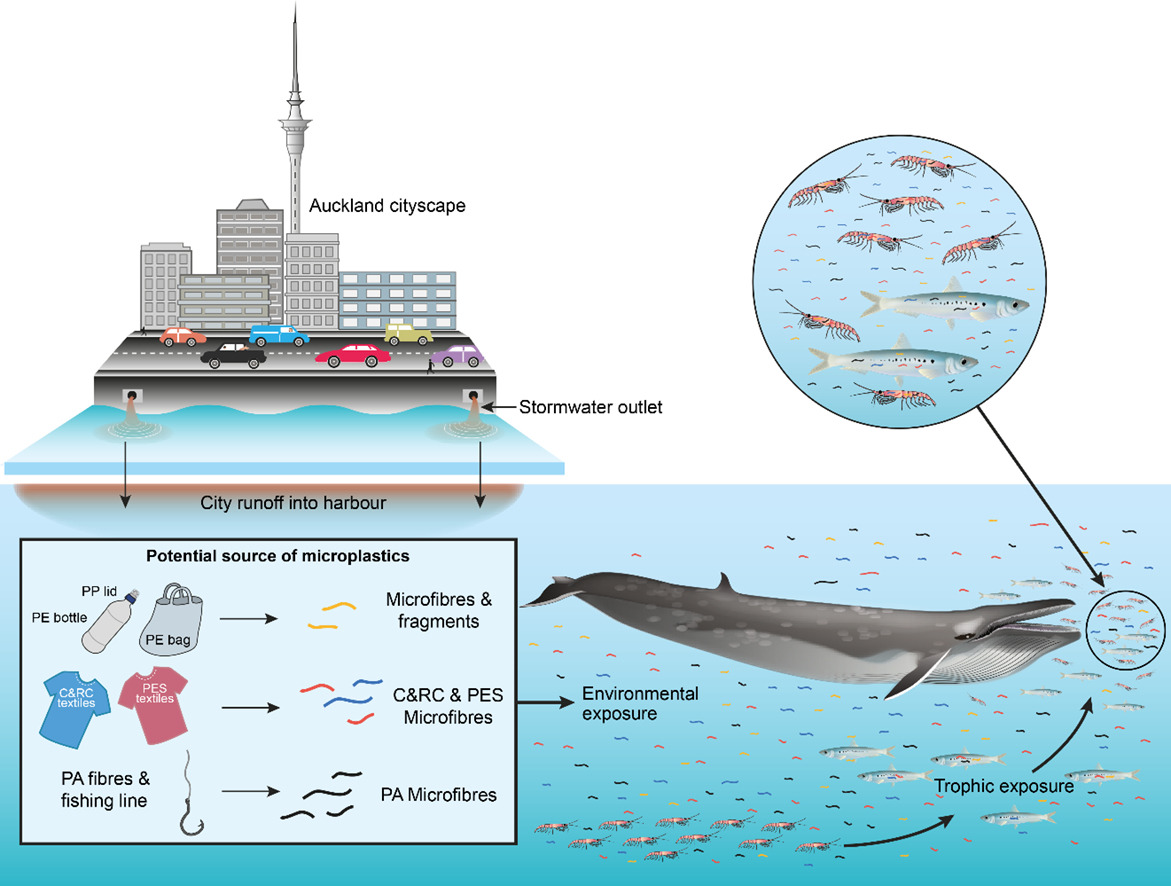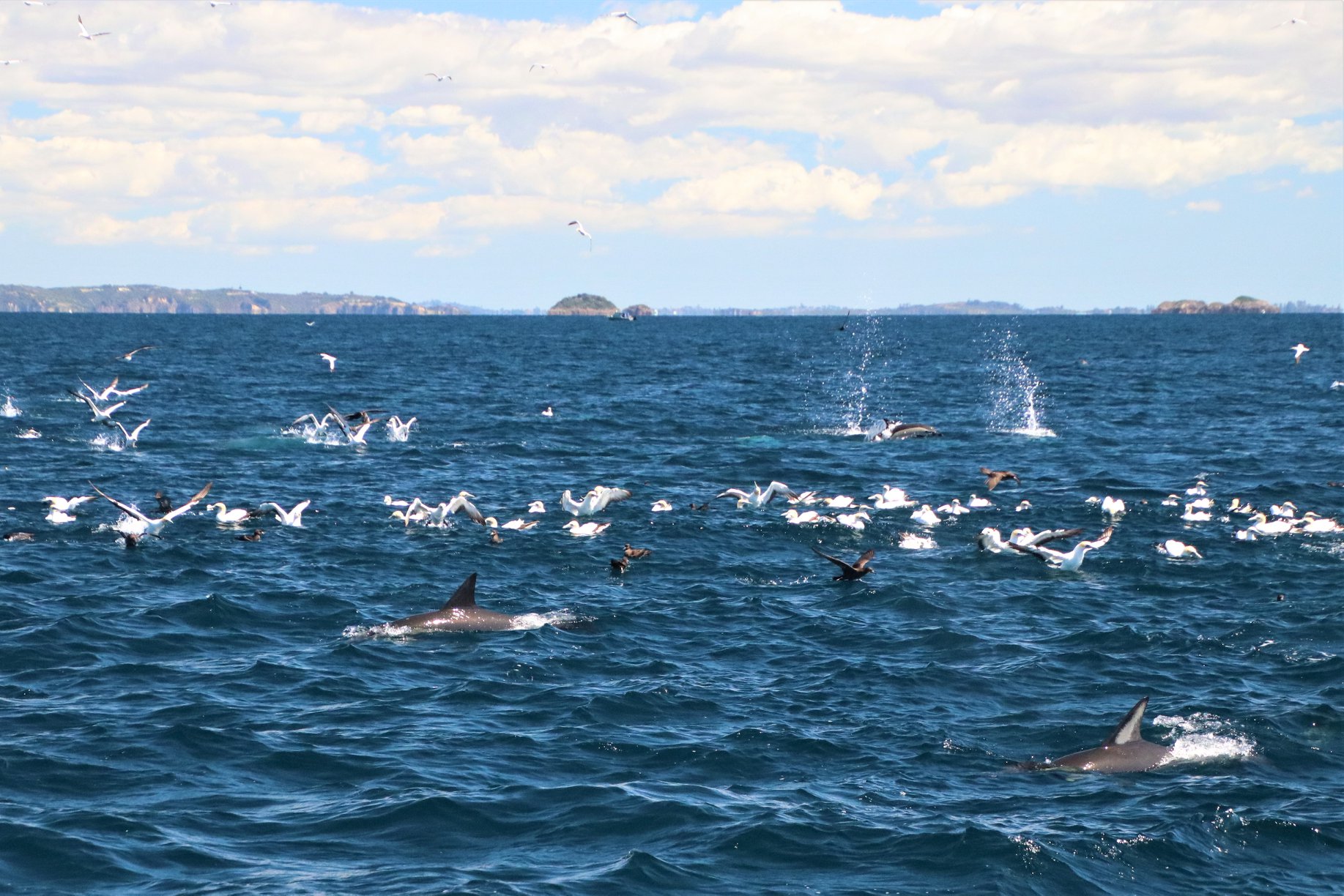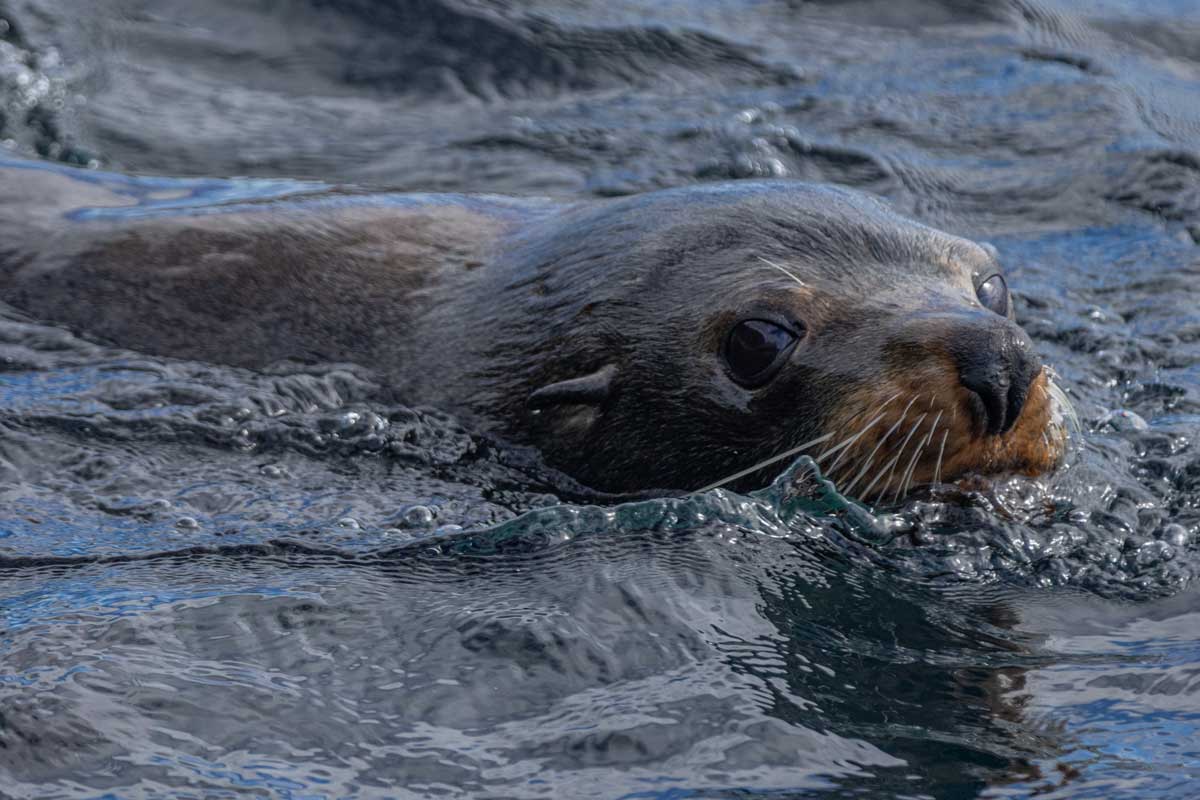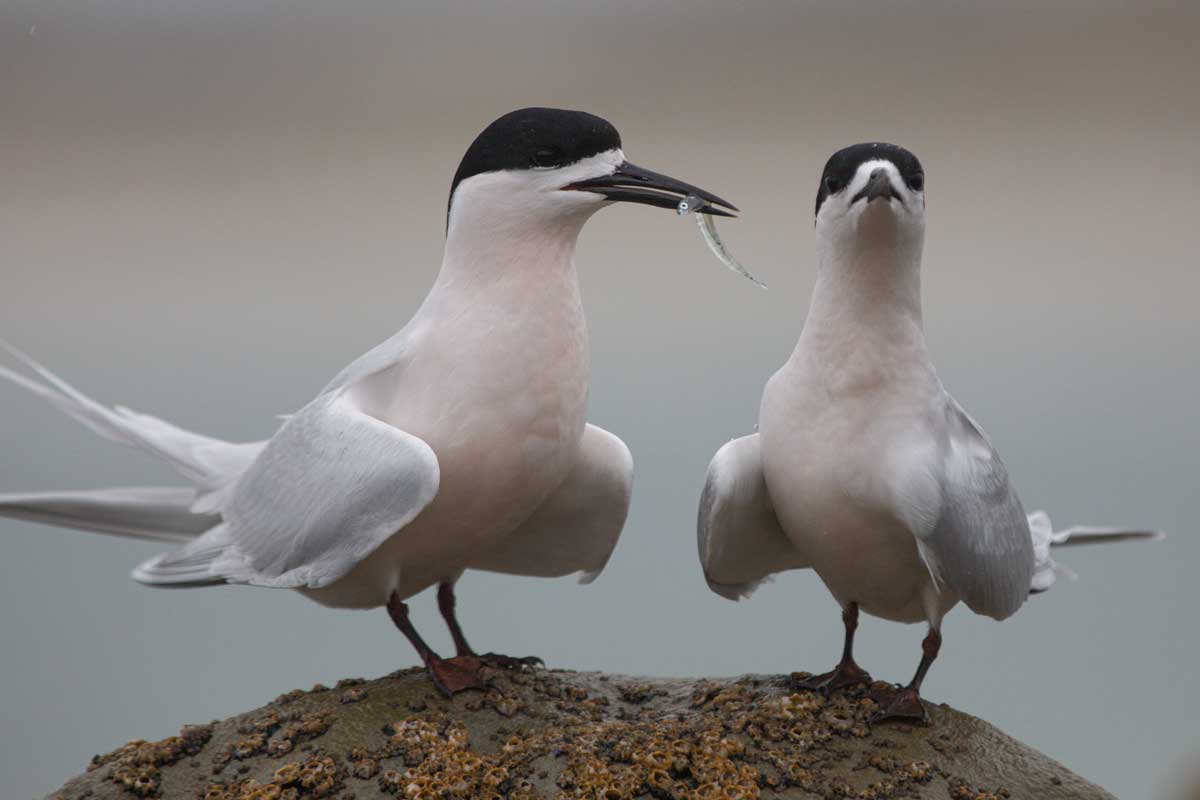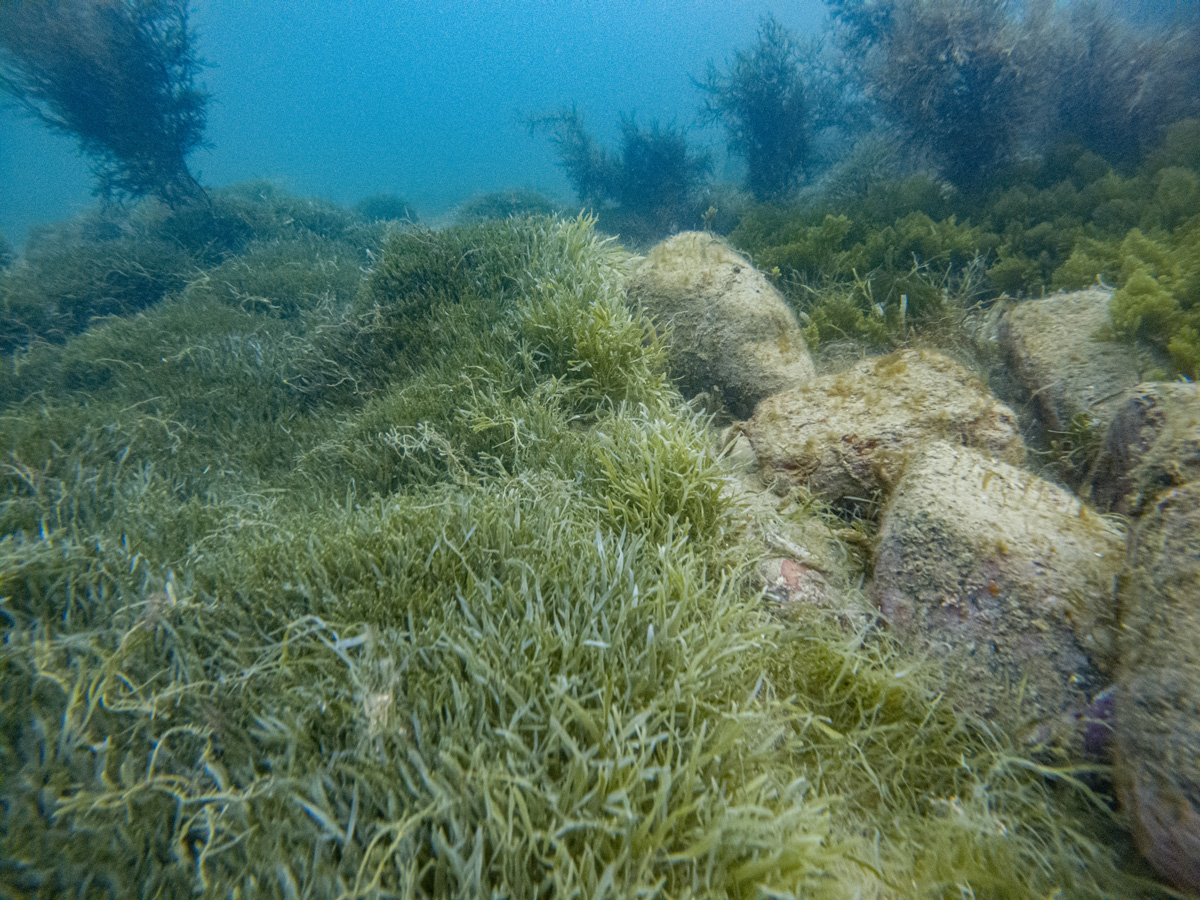A mesmerizing sight to behold in the Marine Park, ‘workups’ or, in scientific terms, multi-species feeding associations (MSFAs) have recently been studied to determine which marine megafauna species are getting involved and the roles they play within them.
Researchers at the University of Auckland found that the species most commonly seen in these feeding aggregations are common dolphins, Bryde’s whales, Australasian gannets, shearwaters and petrels although other marine mammals and seabirds can sometimes be observed. It is also well known that sharks and other large predatory fish can be found beneath the surface at these feeding frenzies.
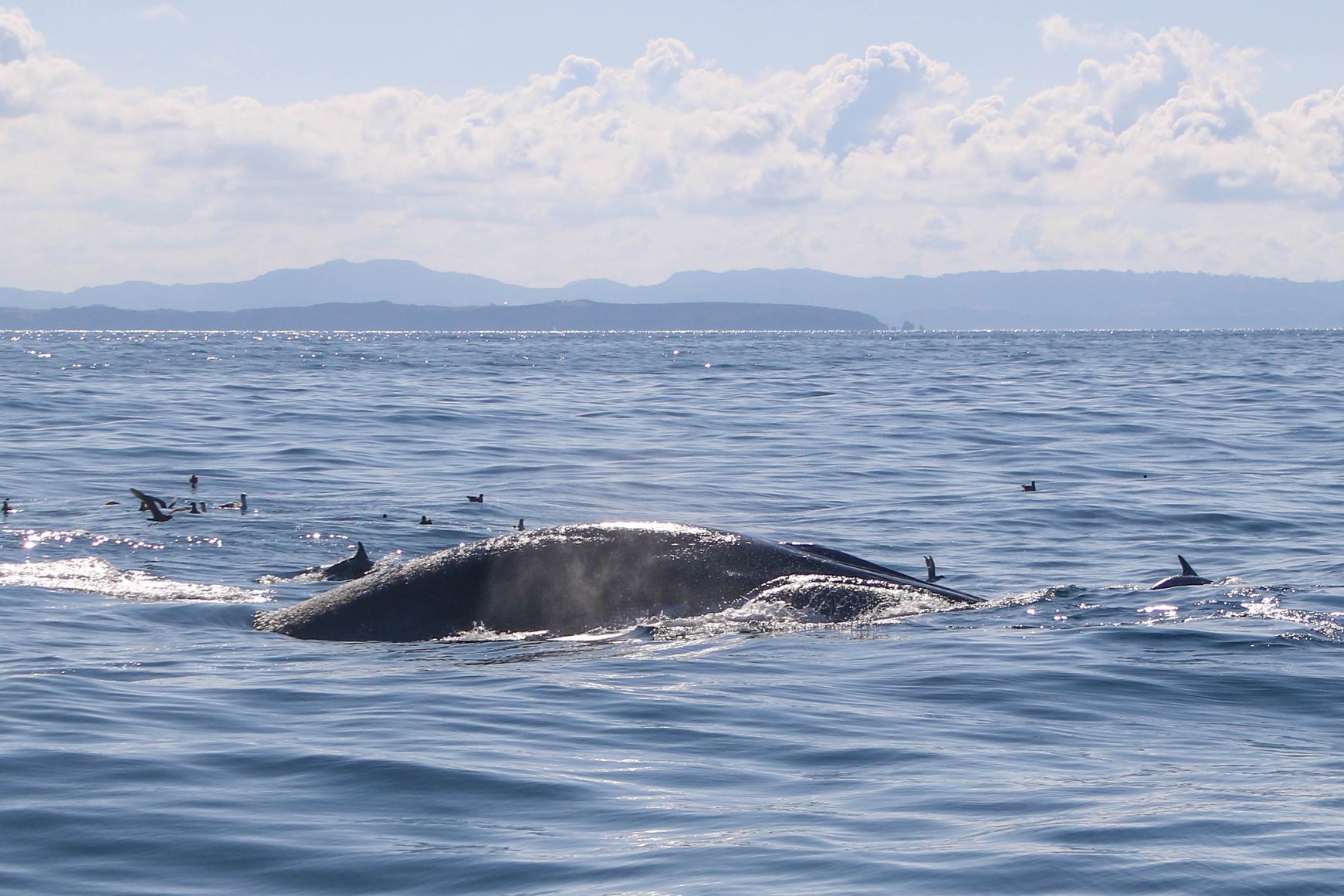
Types of MSFA
Data analysis found 3 types of feeding aggregation:
- Fish feeding predators with resident Bryde’s whales
- Fish feeding predators without Bryde’s whales
- Plankton feeding predators with Bryde’s whales
The study highlights that Bryde’s whales are being increasingly observed in the plankton feeding aggregations and less so in the fish feeding ones. The cause of this is currently unknown but could be driven by environmental change, prey availability or even a general preference for zooplankton over fish. One set of vital information that is missing is that the status of target fish species (pilchards, anchovies and mackerel) is currently unknown for the Marine Park.
Roles within an MSFA
Within these aggregations, there is a diversity equilibrium which is the maximum number of species that are involved before the effects of competition outweigh the benefits of being involved. Each species can play a number of roles:
- Initiators – species that are the first to detect the prey and ultimately attract others through their surface behaviours
- Joiners – species that join an existing feeding aggregation initiated by another species
- Terminators – species that terminate a feeding aggregation by engulfing large amounts of prey
- Catalysts – species that attract other species to MSFAs
For example, Bryde’s whales can play the role of a ‘joiner’ after being alerted to an MSFA from the sound of Australasian gannets plunging into the water at a fish feeding aggregation. These whales can also play the role of the ‘terminator’, engulfing the majority of a fish bait ball and therefore causing the feeding aggregation to cease.
Baleen whales feeding in the marine park have recently been estimated to be engulfing over 3 million pieces of microplastic per day with the majority of this coming directly from their zooplankton prey. With studies showing that Bryde’s whales are preferring zooplankton over fish in recent years and in doing so are also swallowing incredible amounts of plastic with every mouthful, it has never been more important to think about our impact on the marine ecosystem in Tīkapa Moana / Te Moananui-ā-Toi.
